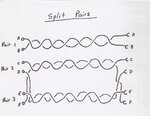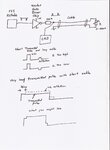SherpaDoug
Full Member level 2
- Joined
- Jun 21, 2011
- Messages
- 149
- Helped
- 28
- Reputation
- 56
- Reaction score
- 28
- Trophy points
- 1,308
- Location
- Cape Cod, USA
- Activity points
- 2,260
I have a system with 1200 feet of multiple twisted pair cable operating a remote underwater robot. The cable is in several segments. It Ohms out fine but I suspect some of the signals are mis-connected as pairs in some segments as I am getting more cross talk than was seen in an earlier generation of the system. The problem signals are 60Hz and 5kHz.
Is there any easy way to tell if the signals are correctly paired all the way through? I would think they would have similar problems in large Ethernet installations but I don't see any discussion of how to root out problem cables there.
I can systematically excite each pair and look for coupling to all the other pairs but that seems like a major pain. Hopefully someone knows a shortcut.
Is there any easy way to tell if the signals are correctly paired all the way through? I would think they would have similar problems in large Ethernet installations but I don't see any discussion of how to root out problem cables there.
I can systematically excite each pair and look for coupling to all the other pairs but that seems like a major pain. Hopefully someone knows a shortcut.

